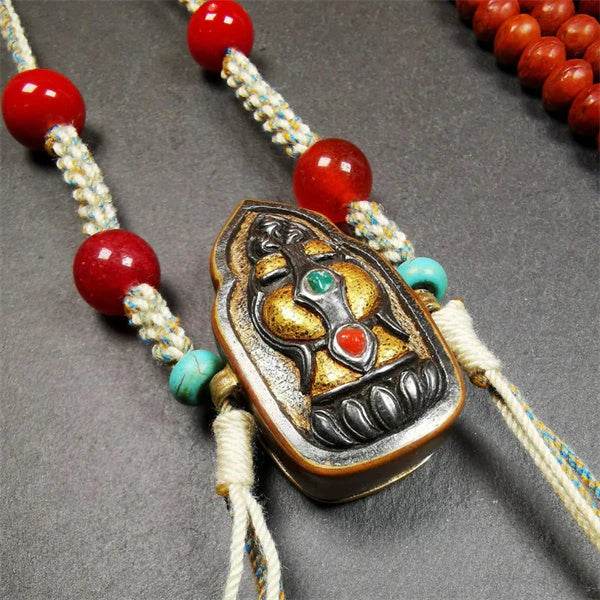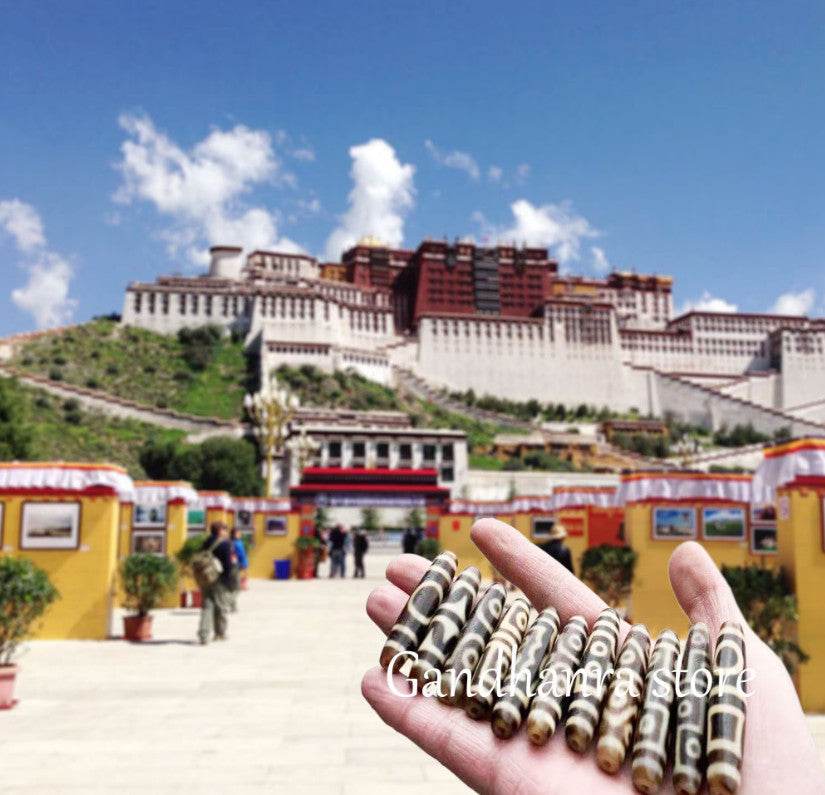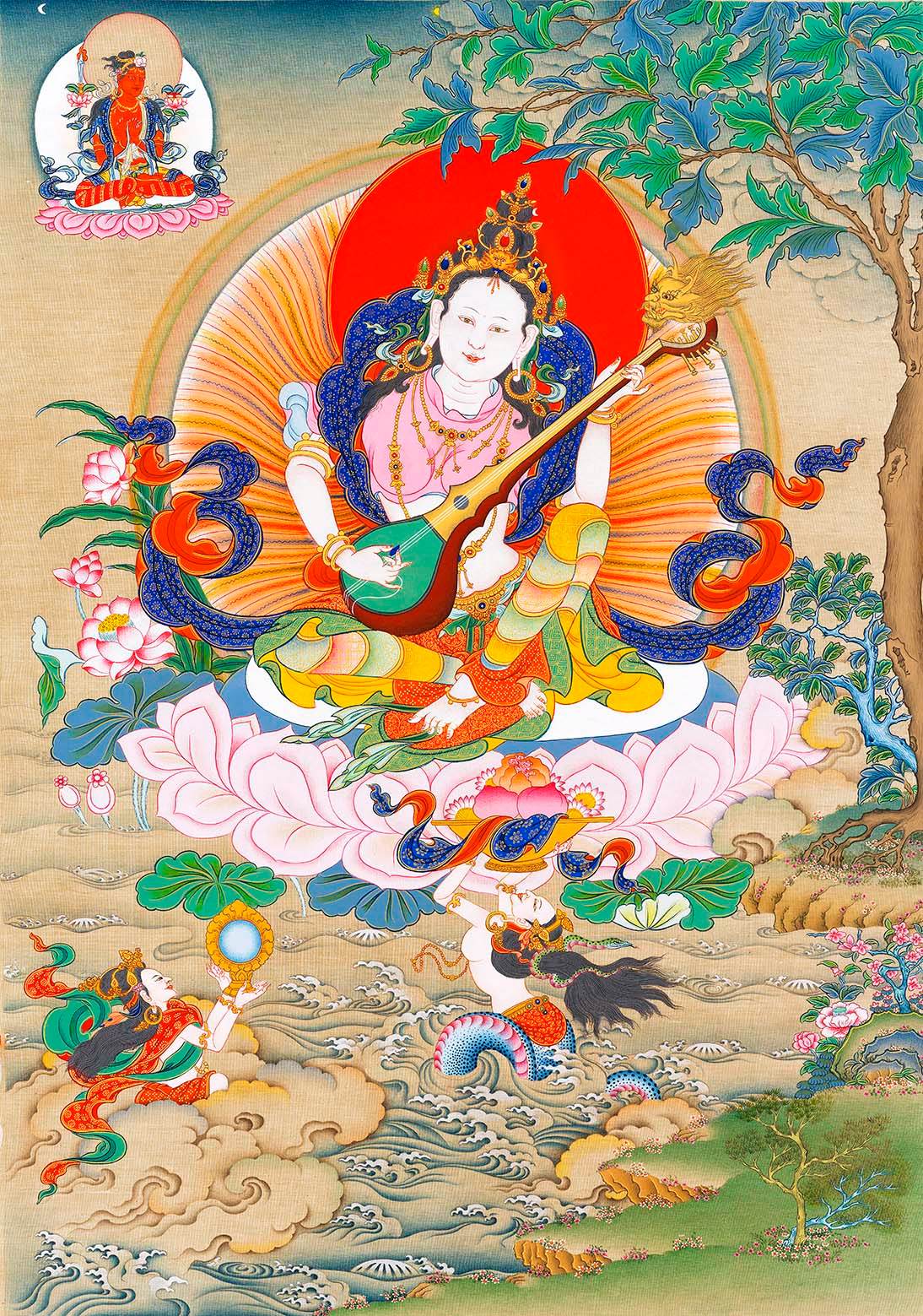
The Bridge-Building Saint: Thangtong Gyalpo, Tibet's Renaissance Man
Thangtong Gyalpo,
the "Iron Bridge Master," was a visionary sage who combined spiritual mastery with earthly innovation.

Click here to shop Thangtong Gyalpo thangka
Introduction to Thangtong Gyalpo
Thangtong Gyalpo (Tibetan: ཐང་སྟོང་རྒྱལ་པོ།, 1385–1464) was a Tibetan Buddhist saint, engineer, physician, and artistic pioneer. Revered as an emanation of the Bodhisattva of Compassion, he transcended conventional boundaries by blending profound spirituality with practical humanitarian work. His legacy lives on through the iconic iron bridges spanning Tibetan rivers and the vibrant art of Tibetan opera.
Unlike solitary meditators, Thangtong Gyalpo embodied enlightenment in action—using ingenuity to alleviate suffering and celebrate the human spirit.
The Origins and History of Thangtong Gyalpo
Born in Tibet’s Tsang region, Thangtong Gyalpo displayed extraordinary intelligence and compassion from a young age. After mastering Buddhist philosophy and meditation, he traveled across Tibet and observed the hardships faced by pilgrims and traders at treacherous river crossings. Inspired by compassion, he devised a revolutionary solution: forging iron chains into sturdy bridges.
He later founded Lhamo (Tibetan Opera), blending Buddhist teachings with music and dance to fund his projects and educate the masses. His endeavors were said to be supported by mystical powers and unwavering determination.

The Symbolism of Thangtong Gyalpo’s Legacy
Iron Bridges:
Represent the connection of communities and overcoming obstacles.
Symbolize compassion made tangible—translating spiritual ideals into physical safety.
Tibetan Opera (Lhamo):
Embodies joy as a path to enlightenment.
Unites art, morality, and communal celebration.
His Staff and Tools:
Signify practical wisdom and the integration of skill with spirituality.
The Heart Practice: Thangtong Gyalpo’s Mantra
Thangtong Gyalpo’s core mantra encapsulates his compassionate essence:
"Om Ah Hung Benza Guru Pema Siddhi Hung"
Meaning of the Mantra:
Om Ah Hung: Purify body, speech, and mind.
Benza Guru: Invoke the indestructible master (Guru Rinpoche).
Pema: Lotus-born (referring to Guru Rinpoche’s origins).
Siddhi Hung: "May blessings and accomplishments manifest."
Chanting this mantra cultivates fearlessness, creativity, and the ability to turn obstacles into opportunities.

How to Connect with Thangtong Gyalpo’s Spirit
Meditation: Visualize him forging bridges over turbulent rivers, transforming challenges into pathways.
Mantra Recitation: Chant his mantra to invoke innovative solutions and compassionate action.
Support Humanitarian Projects: Donate to initiatives that combine practical aid and cultural preservation.
Engage with Tibetan Opera: Watch or support Lhamo performances to honor his artistic legacy.
Conclusion
Thangtong Gyalpo’s life teaches us that enlightenment is not separate from earthly service. Through bridges, medicine, and art, he demonstrated that wisdom without action is incomplete—and that compassion can literally build roads where none existed.
May Thangtong Gyalpo’s pioneering spirit inspire your own path of compassionate creativity!
Have you encountered Thangtong Gyalpo’s bridges or Tibetan opera?
Share your insights in the comments below!







3 Kommentare
zic9an
9xqtz4
9xqtz4